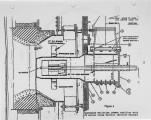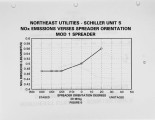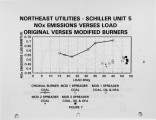| OCR Text |
Show 2 burners. The unit has one forced draft fan, one induced draft fan, a Ljungstrom air heater and electrostatic precipitation. There are two levels of burners with three in each level for a total of six burners. Figure 1 shows a sectional side view of the original boiler prior to the coal conversion. The C-E burners were modified in 1990 to a reduced burner throat size, a reduced length and diameter coal pipe and the addition of coal spreaders to reduce LOIs. See Figure 2. The unit bums bituminous coal with less than 1 % sulfur and No.6 fuel oil. In conjunction with the Clean Air Act Amendment of 1990 under Title I, Northeast Utilities was required to reduce NDx emissions to less than .5 Ib/mmBtu firing any combination of coal or oil. Baseline NDx emissions were approximately. 7 Ib/mmBtu. RJM Corporation and Northeast Utilities jointly funded a NDx reduction optimization program to reduce NDx emissions on this unit by burner modifications and optimizations. NOx Optimization Program The NDx Optimization Program consisted of balancing the secondary airflow, balancing primary air and coal flow, Computational Fluids Dynamic (CFD) modeling of the baseline and modified burner, modifications to the coal pipe, and the addition of staged coal flame stabilizers and new coal spreaders. The secondary air was measured utilizing RJM Corporation's proprietary Air Distribution Analysis (ADA) methodology. The back plate rings were adjusted to achieve a secondary air balance within + 5 % . The dirty air and coal flow was measured by a reverse impact pitot tube and rotorprobe. Balancing was achieved by changes to the coal line orifice plates. Dirty airflow was balanced to within +5 % and coal flow on Pulverizer A within 8 %. The coal flow on Pulverizer B was measured to be within + 13.4% and -23.5%. The pipe tap for the rotorprobe was located on a curved section of pipe and believed to be the cause of the significant deviations between coal flow and clean and dirty airflow. |


















